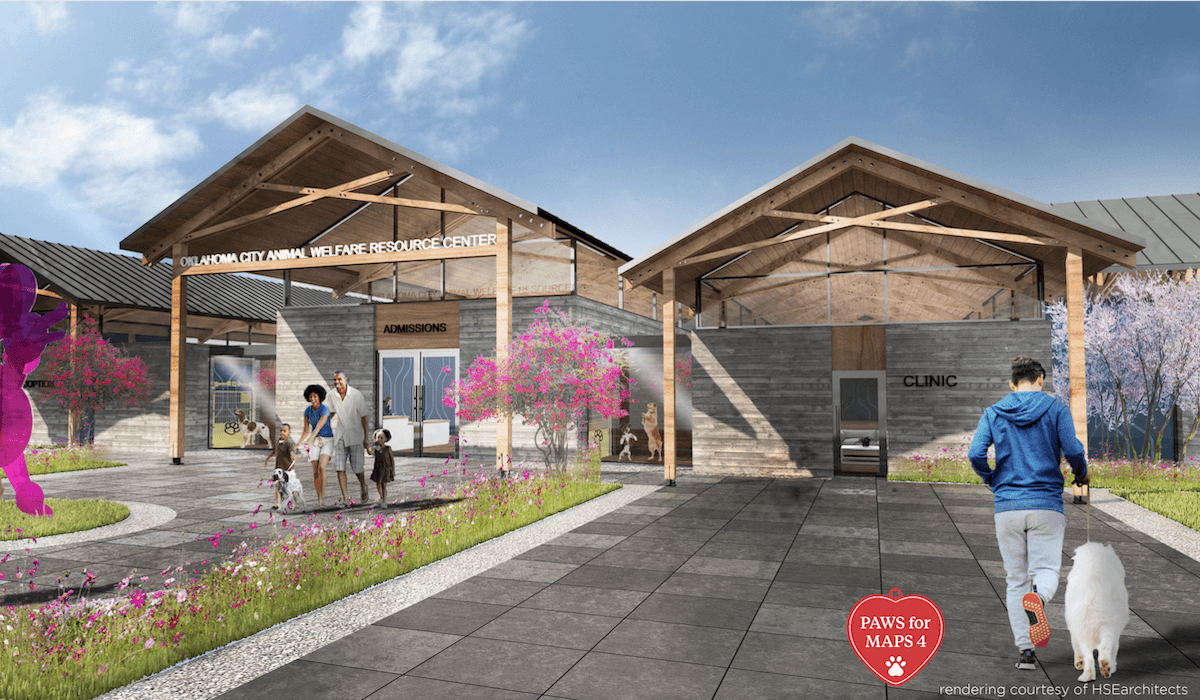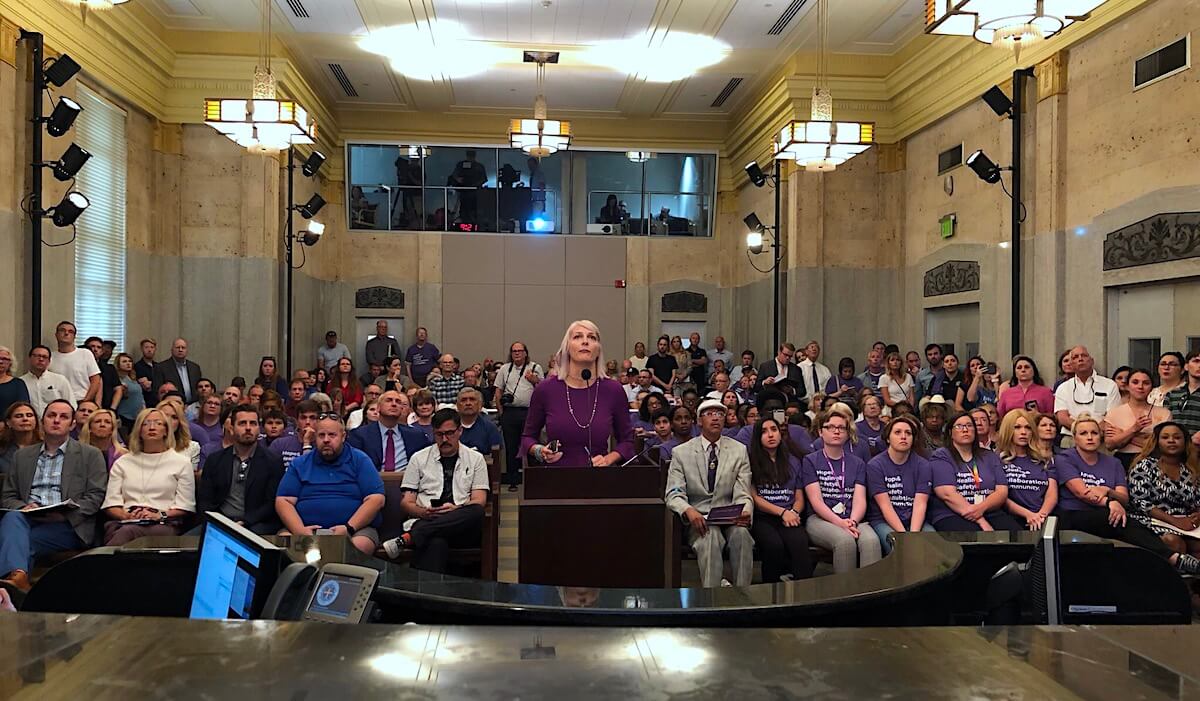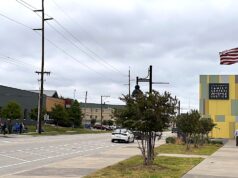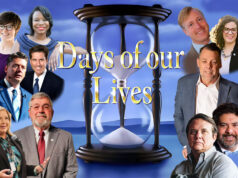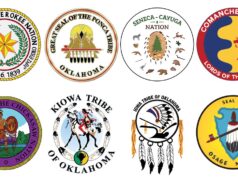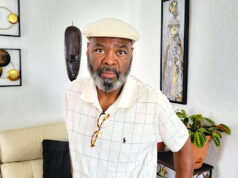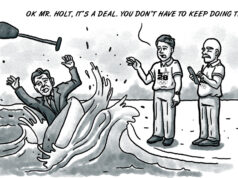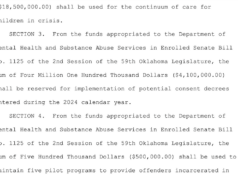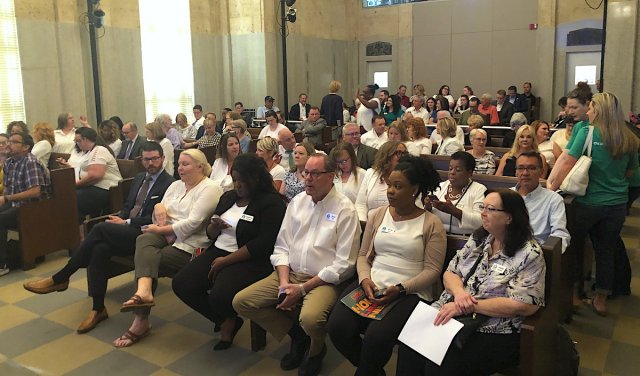
A refresh to Chesapeake Arena and improvement in the Oklahoma City’s public transportation system were among the items discussed during a marathon seven-hour presentation of MAPS 4 ideas Wednesday.
At $130 million, the improvements slated for Chesapeake Energy Arena, which serves as home for the Oklahoma City Thunder, is the most expensive MAPS 4 proposal so far and could be among the most controversial.
Presented by Oklahoma City special projects manager Dan Thompson, the plan includes $55 to $60 million in upgraded fan amenities, $30 to $33 million in building investment in the current arena, as well as $12 to $15 million for upgrades to the team’s current publicly financed practice facility in northeast Oklahoma City.
When it opened in 2002, the arena cost about $90 million. Mayor David Holt said the facility is “bare bones” and facilities in other cities cost more than $300 million to construct.
Thompson said the arena is in need of significant maintenance as it nears its 20th year of operation. Since it opened, more than 18 million people have visited the arena.
“Anything you touch. The seats, the plumbing, all those things require routine maintenance,” he said. “And sooner or later they’re going to get to the end of life. That’s kind of where we’re at today.”
Some of the other items would include a new scoreboard, wider concourses, a food court and upgraded entrances. The practice facility is also in need of upgraded HVAC systems, Thompson said.
The arena’s economic impact adds up to about $90 million in direct spending, according to figures provided by the city.
But at least one councilmember is skeptical. When Clay Bennett purchased the Thunder more than a decade ago, the team was valued at about $300 million. Today, the team is worth about $1.5 billion, according to Forbes.
“I wonder if we can’t ask them to take more of a hit rather than a single mom who is trying to make ends meet?” Ward 6 Councilwoman JoBeth Hamon asked.
While Thompson did not directly respond to Hamon’s question, Holt said maintaining the arena is critical.
“We know how we got this team. It’s because another city didn’t keep up,” Holt said.
Transit system improvements presented
In the plan presented by Oklahoma City public transportation and parking director Jason Ferbrache, MAPS 4 would fund about $60 million in improvements in its transit system.
The presentation included advanced transit, enhanced bus service, bus stop improvements and planned growth.
RELATED
Arena, animals, kids take center stage at second MAPS 4 forum by Matt Patterson
The advanced transit portion would include expanding options for commuters by creating park and ride centers.
The enhanced bus service part of the plan would cost $12.6 million, according to estimates, and would include additional buses and systems that would give them traffic light priority on their routes similar to what the city’s downtown streetcar system uses.
Ferbrache said the added buses would help take the wait time down to 30 minutes or less on all of the city’s routes.
Currently, there are three routes where waits can exceed that time. Wait times on some routes could be reduced to 15 minutes, he said.
An additional $9.6 million would be devoted to improving bus stops, including lights and ADA modifications at each location.
Currently the city has 1,400 stops, but only about 200 have shelters. The plan would make about half of the stops covered.
The final $5 million would be split between land acquisition and another long-term study on the city’s public transit goals. Ferbrache said the current plan was created more than a decade ago.
“Through our resident surveys we’ve learned frequency of service, the time it takes to make a trip and the availability of covered bus shelters are important considerations for them,” he said. “With the MAPS 4 concept plan we believe all of the projects tie directly back to that customer and resident feedback.”
Homelessness targeted in MAPS 4
About 1,300 people are homeless in Oklahoma City on any given day, according to Homeless Alliance director Dan Strong.
Under MAPS 4, between $40 to $60 million would be provided. Strong said that money could be leveraged into $400 to $600 million through private financing, low income housing tax credits and grants.
The plan calls for the preservation of 3,000 existing housing units that may be uninhabitable in a decade because of decay, he said.
It would also include 500 homeless support housing units which can be used for those in need of emergency shelter.
A further 500 affordable housing units would also be constructed under the proposal.
Diversion hub could help with long term justice costs
The final presentation of the day centered on a proposed diversion hub which would provide life-stabilizing resources for people entangled in the criminal justice system.
RELATED
‘Dream big’: City hears first set of MAPS 4 proposals by Matt Patterson
The proposal includes construction of a 30,000-square-foot building at a cost of $15 to $18 million.
The hub would provide services for substance abuse, housing, education, family support and mental health.
Judge Ken Stoner, who gave the presentation, said the diversion hub would have long term benefits including improving the rate of probation complement, lowering department of corrections admissions and would reduce the number of people being held in jail before going to trial.
“We are capable of creating a framework that is in line with our values,”” Stoner said. “We’re capable of creating a framework for people to be successful. We must rise to the occasion because the stakes are too high otherwise.”










